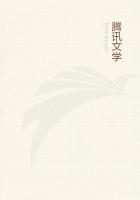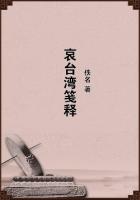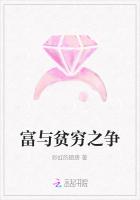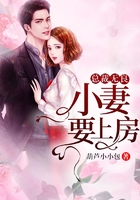This humble, rusty green plant, weakly lopping over the surrounding grass, so that often only its insignificant purple, clover-like flower heads are visible, is another of those immigrants from the old countries which, having proved fittest in the fiercer struggle for existence there, has soon after its introduction here exceeded most of our more favored native flowers in numbers.Everywhere we find the heal-all, sometimes dusty and stunted by the roadside, sometimes truly beautiful in its fresh purple, violet, and white when perfectly developed under happy conditions.In England, where most flowers are deeper hued than with us, the heal-all is rich purple.What is the secret of this flower's successful march across three continents?
As usual, the chief reason is to be found in the facility it offers insects to secure food; and the quantity of fertile seed it is therefore able to ripen as the result of their visits is its reward.Also, its flowering season is unusually long, and it is a tireless bloomer.It is finical in no respect; its sprawling stems root easily at the joints, and it is very hardy.
Several species of bumblebees enter the flower, which being set in dense clusters enables them to suck the nectar from each with the minimum loss of time, the smaller bee spending about two seconds to each.After allowing for the fraction of time it takes him to sweep his eyes and the top of his head with his forelegs to free them from the pollen which must inevitably be shaken from the stamen in the arch of the corolla as he dives deeply after the nectar in the bottom of the throat, and to pass the pollen, just as honeybees do, with the most amazing quickness, from the forelegs to the middle ones, and thence to the hairy "basket" on the hind ones - after ****** all allowances for such delays, this small worker is able to fertilize all the flowers in the fullest cluster in half a minute! When the contents of the baskets of two different species of bumblebees caught on this blossom were examined under the microscope, the pollen in one case proved to be heal-all, with some from the goldenrod, and a few grains of a third kind not identified; and in the other case; heal-all pollen and a small proportion of some unknown kind.Bees that are evidently out for both nectar and pollen on the same trip have been detected visiting white and yellow flowers on their way from one heal-all cluster to another; and this fact, together with the presence of more than one kind of pollen in the basket, shows that the generally accepted statement that bees confine themselves to flowers of one kind or color during a trip is not always according to fact.
The older name of the plant, Brunella, and the significant one, altered by Linnaeus into the softer sound it now bears, is doubtless derived from the German word, braune, the quinsy.
Quaint old Parkinson reads: "This is generally called prunella and brunella from the Germans who called it brunellen, because it cureth that disease which they call die bruen, common to soldiers in campe, but especially in garrison, which is an inflammation of the mouth, throat, and tongue." Among the old herbalists who pretended to cure every ill that flesh is heir to with it, it was variously known as carpenter's herb, sicklewort, hook-heal, slough-heal, and brownwort.
AMERICAN or MOCK PENNYROYAL; TICKWEED; SQUAW MINT(Hedeoma pulegioides) Mint family Flowers - Very small, bluish purple, clustered in axils of upper leaves.Calyx tubular, unequally 5-cleft; teeth of upper lip triangular, hairy in throat.Corolla 2-lipped, upper lip erect, notched; lower one 3-cleft, spreading; 2 anther-bearing stamens under upper lip; 2 sterile but apparent; 1 pistil with 2-cleft style.Stem: Low, erect, branched, square, hairy, 6 to 18 in.
high.Leaves: Small, opposite, ovate to oblong, scantily toothed, strongly aromatic, pungent.
Preferred Habitat - Dry fields, open woodland.
Flowering Season - July-September.
Distribution - Cape Breton Island westward to Nebraska, south to Florida.
However insignificant its flower, this common little plant unmistakably proclaims its presence throughout the neighborhood.
So powerful is the pungent aroma of its leaves that dog doctors sprinkle them about freely in the kennels to kill fleas, a pest by no means exterminated in Southern Europe, however, where the true pennyroyal of commerce (Mentha Pulegium) is native.Herb gatherers who collect our pennyroyal, that is so similar to the European species it is similarly employed in medicine, say they can scent it from a greater distance than any other plant.
BASTARD PENNYROYAL, which, like the Self-heal, is sometimes called BLUE CURLS (Trichostema dichotomum), chooses dry fields, but preferably sandy ones, where we find its abundant, tiny blue flowers, that later change to purple, from July to October.Its balsam-like odor is not agreeable, neither has the plant beauty to recommend it; yet where it grows, from Maine to Florida, and west to Texas, it is likely to be so common we cannot well pass it unnoticed.The low, stiff, slender, much-branched, and rather clammy stem bears opposite, oblong, smooth-edged leaves narrowed into petioles.One, two, or three flowers, borne at the tips of the branches, soon fall off, leaving the 5-cleft calyx to cradle four exposed nutlets.
>From the five-lobed tubular corolla protrude four very long, curling, blue or violet stamens - hair stamens the Greek generic title signifies - and the pretty popular name of blue curls also has reference to these conspicuous filaments that are spirally coiled in the bud.















